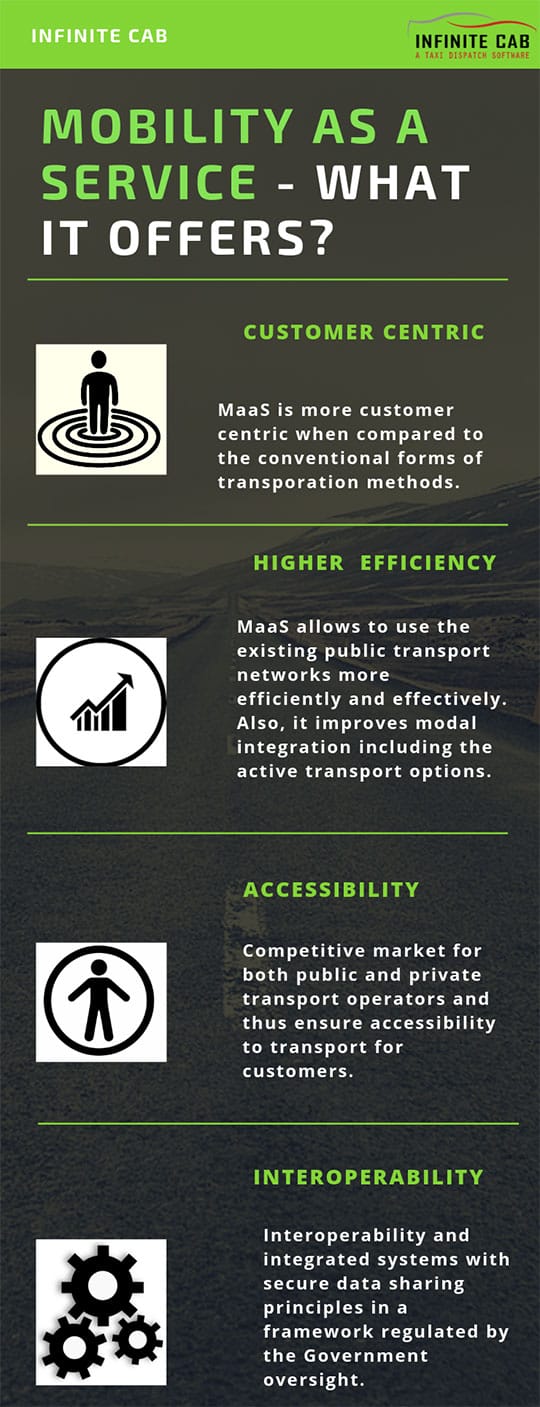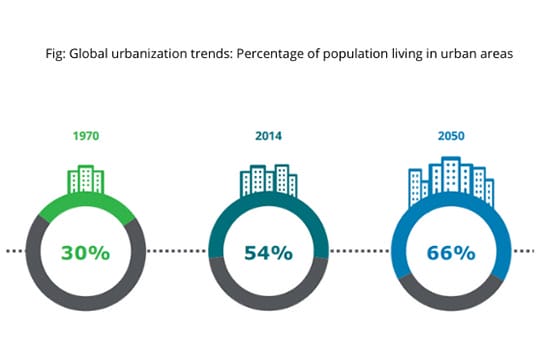Mobility as a Service (MaaS) is expected to change the face of the transportation industry soon. It brings down the entire transportation system in your locality under a single digital platform. It is believed that the concept of MaaS makes the necessity for owning a private vehicle for your transportation needs almost zero by the year 2050!
The basic concept was there in many parts of the world, but it was implemented for the first time in Finland in the year 2015 and is still running successfully! The father of the MaaS concept is considered to be Mr. Sampo Hietanen. It was he who introduced the first commercial Mobility as a Service application.
The concept was an instant click, and he became an absolute rage in Finland. How cannot he?
The transportation industry is regarded as the world’s second-largest consumer market. The public is spending average spending of about 350 US Dollars per month on their mobility needs! So, everyone in the search for better transportation methods and applications like taxi booking app.
Hence a lot of research is being conducted on this industry to make the system more efficient as well as productive. Thus, it will be offering better business opportunities for the ones who are planning to make it big in the field of business.
Well, we will be dealing with the topic of Mobility as a service, its impact, and a lot more in this blog here. Keep reading!
What is Mobility as a Service? What does it Offer?

Mobility as a service (MaaS) atomizes the entire transportation like cars, taxis, public transportation, and even railway in your locality into a capsule. You can book tickets to a particular destination, pay the amount in advance or afterward, plan your trip, view information, etc. through this atomized module. It has found out that MaaS makes the transportation system more efficient and beneficial for the commuters.
What are the advantages of MaaS?
- Customer-Centric: MaaS focuses on the needs and values of the customers than the traditional transportation systems. The customer feels satisfied when they are given higher preferences.
- Higher Efficiency: MaaS makes the entire transportation system highly efficient when compared to the present mode of transportation.
- Accessibility: Since MaaS integrates almost all types of transportation under a single roof, the customers can always rely on the MaaS system.
- Interoperability: Interoperability is the capacity of the computer systems to exchange and thus make use of those collected information.
Recommended for you: Top 10 Unique Features You Must Include in Your Taxi Booking App.
The working model of MaaS
It is a system for securing and sharing the required data regarding transportation like resource utilization, ride payment details, location details, etc. When the organizations implement MaaS, a series of processes are executed to share the required data for the software to track the destination location, route optimization, managing critical data to make it a seamless experience.
Below steps are included to avail the service:
- The customers will request a ride via their mobile app.
- The search engine will track the optimal route between the two different locations by analyzing the various forms of private and public transportation.
- The customer follows the required steps to book the tickets.
- A payment gateway is integrated into the application to manage the post or prepaid ticket fare.
The MaaS connects the various transportation in a single platform and it eases the ride plan of the customer using modern technology.
What is the Fueling Factor for MaaS?
As we have discussed above, MaaS was born in Helsinki, but later a lot of metropolitan cities around the world began to implement the same in their local version. Some of those big cities including Paris, Montpelier, Vienna, Hanover, Las Vegas, Los Angeles, Denver, Singapore, Barcelona and many more. What was the motivating factor behind all this? The primary reason was the migration of people from rural areas to big cities. So, accommodating their transportation needs will make the cities more congested. See the figure given down where it depicts the rate of increase in the urban population.

Image source: www.un.org.
So in such situations, the concept of car sharing became a massive trend in most parts of the world (See the image depicted below). The mobility experts in the field predict that MaaS is the primary solution to save the cities form such gridlocks to a greater extent. It helps you a lot to travel more conveniently and efficiently. Moreover, the population in cities will only grow exponentially.

Data source: tsrc.berkeley.edu.
MaaS: Seamless Intermodal Travel
Most of the major cities around the world will have some journey planners to make the trip in and around the city an easy task. They will be helping you to book your tickets, pay the amount in advance and make all the necessary arrangements for the journey. But what if you can do it all by your means through a few taps on your mobile phone.
Mobility as a Service App integrates multiple modes of transportation into a single module. Moreover, it also provides the facilities of travel option recommendations, reservations/booking, and payment facilities.
A live example for a present-day MaaS application is the one provided by Deutsche Bahn’s Qixxit and Daimler’s Moovel. Both of them give a nationally integrated mobility service. It combines both the public as well as private modes of transportation in all range of travel modes.
Ticket-less travel is another feature of this beautiful system. You can enter and exit all forms of transportation modes at any point in time! The present MaaS provides two types of payment functionalities: monthly subscription and pay-as-you-go option. The monthly subscription allows the ones who arrange tours and journeys can buy in bulk and pass it to the customers who require one.
Pay-as you go allows you to pay once a particular trip is completed in any form of transportation.
Leading MaaS providers across the world

| Project Name | Description | Owned By | Location of Service |
|---|---|---|---|
| Whim App | Whim App offers is purely subscription-based MaaS app. It offers common public access to different kinds of transportation services like taxis, rental cars, public transport, bike sharing, etc. The app learns users’ preferences and syncs with their calendars to intelligently suggest ways to get to an event. | MaaS Global | Helsinki |
| UbiGo | UbiGo integrates mobility services like public transportation, car sharing, rental car services, taxi services, and a bicycle system. They also provide 24*7 customer support and bonuses for sustainable choices. | Partly owned by Go with many collaborators like Vinnova | Gothenburg |
| Qixxit | Qixxit App is a treat for the daily commuters. It has collaborations with more than 20 service providers. It helps to plan routes according to the needs of the user. They offer car-sharing, ride-sharing, and bike-sharing options, including ideal train connections! | Deutsche Bahn | Germany |
| Moovel | Moovel App allows users to search, book and pay for the rides through a single platform. They also provide the option to pay for public transportation in certain German cities like Stuttgart and Hamburg. | Daimler | Germany, and in testing phases in Boston, Portland, and Helsinki |
| Beeline | Beeline App is one of the leading crowdsourced bus service providers in Singapore. It allows the customers to book a seat on the buses which have a deal with the Beeline team. It also allows users to track their location in real-time. The app also provides the feature to suggest new routes if a lot of people demand. | Government agencies Infocomm Development Authority and Land Transport Authority in partnership with the private sector | Commuters in Singapore |
| SMILE App | SMILE App integrates multiple transportation options under a single umbrella. Some of the functions it allows to perform are view information, booking, online payment, usage, and billing. It acts as a standardized platform for all types of service providers and links their systems to the SMILE Application, including the ticketing functionalities. | The SMILE project was initiated by Wiener Stadtwerke in cooperation with Wiener Linien (Vienna’s public transport provider), Austrian Federal Railways, and private car-sharing, taxi, and bike-sharing service providers | Vienna |
| Communauto/ Bixi | Certain municipal transport authorities in the city of Quebec offer worthy mobility packages including services like bike-sharing. They provide some great packages that benefit the customers financially. | Communauto | Quebec, Canada |
| Bridj | Bridj App is a US-based on-demand commuter service app that enables the passengers to commute between their office and home during their working hours. They do provide a fleet of flexible vehicles for different purposes too. It provides a more efficient and effective system for daily travelers. | Bridj Inc. | Commuters in Boston, Kansas City, and Washington DC |
You may also like: 70mai 1S Smart WiFi Car DVR Review – A Great Dash Cam for your Road Safety.
LOOKING AHEAD: THE FUTURE OF MAAS

Mobility as a Service is still at its beginning stages, even though many people have experienced the comfort it delivers.
The advantages that MaaS providers to commuters living in a city are plenty. By integrating more trains, more roads and parking garages will help us to solve the problem of congestion in the towns to a great extent.
Another one includes that it connects all types of transportation networks into a single platform, and thus, the requirements of daily urbanite commuters are met with ease.
Moreover, it is all implemented using the latest smartphone technology with 4G/5G networks, artificial intelligence, dynamic routing, and much more. So, mobility becomes more comfortable than ever before.
Hence, MaaS is undoubtedly the next big thing in the evolution of mobility. If it’s not there in your city right now, keep calm. Mobility as a Service (MaaS) is coming!
This article is written by Jeseena K. She is a senior content writer at Infinite Open Source Solutions LLP, a leading direct selling software provider. She is a voracious reader and she spends her free time reading a broad spectrum of subjects ranging from fiction to the latest software technology.





